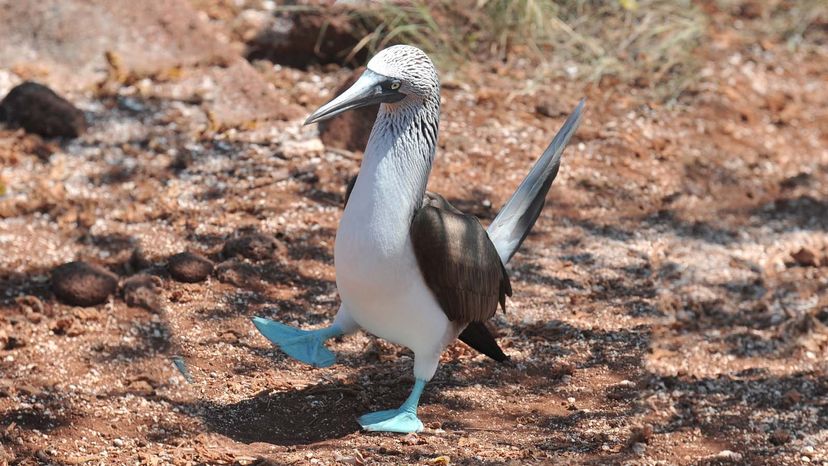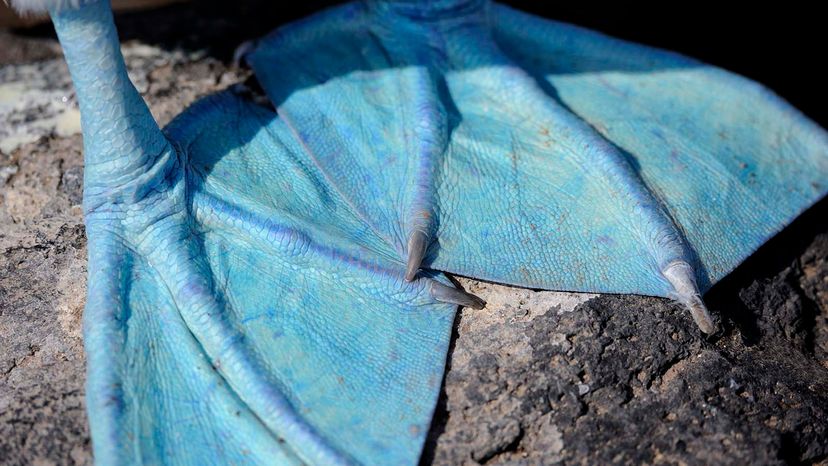Like other seabirds, the blue-footed booby nests on land and doesn't seem to mind the rocky terrain of shorelines or volcanic islands. Unlike other birds that build elaborate nests in hopes of wooing a mate, the blue-footed booby's successful courtship culminates instead in a humble abode. A female lays one to three eggs, and both partners sleep in a nest that is built by doing what comes naturally — defecation.
As the mated pair (they usually only bond for one breeding season) occupies a scrape or depression in rock, they create a circular walled nest over time built with layer upon layer of poop. But all is not always well within those walls. Male boobies unsure of egg paternity with a new female may destroy the eggs. Other booby species may maraud the nest and break the eggs. And, because the eggs hatch four days apart from each other, older chicks may kill the newly hatched competition.
Each new generation highlights the reason blue feet work for the booby. The color comes from carotenoid pigments that are ingested in the bird's fresh fish-rich diet. Any bird that is weak or unhealthy will struggle to feed itself and therefore will not command the brightest blue for its feet. The intensity of blue, whether weak or strong, signals the male's health and potential as a mate, which means that breeding females can make a decision by looking at a male's feet during a mating dance.
"Male blue-footed boobies are evaluated by potential mates by the blueness of their feet," says Lisa M. Webb, a licensed clinical psychologist who recently completed a master's degree in environmental health and conservation science at Johns Hopkins University, which included collecting data on blue-footed boobies in the Galápagos Islands. "This blueness is an indicator of health and strength, so a female will choose a mate with vivid dark blue feet, as that suggests a greater probability of healthy offspring."
Although being able to judge a male's virility by his blue feet would appear to streamline dating decisions, blue-footed booby populations have been shrinking. Largely because of declining sardine numbers, the blue-footed booby has gone from about 20,000 adults in the Galápagos Islands to fewer than 6,500 in 2018, the latest year for which data is available.


